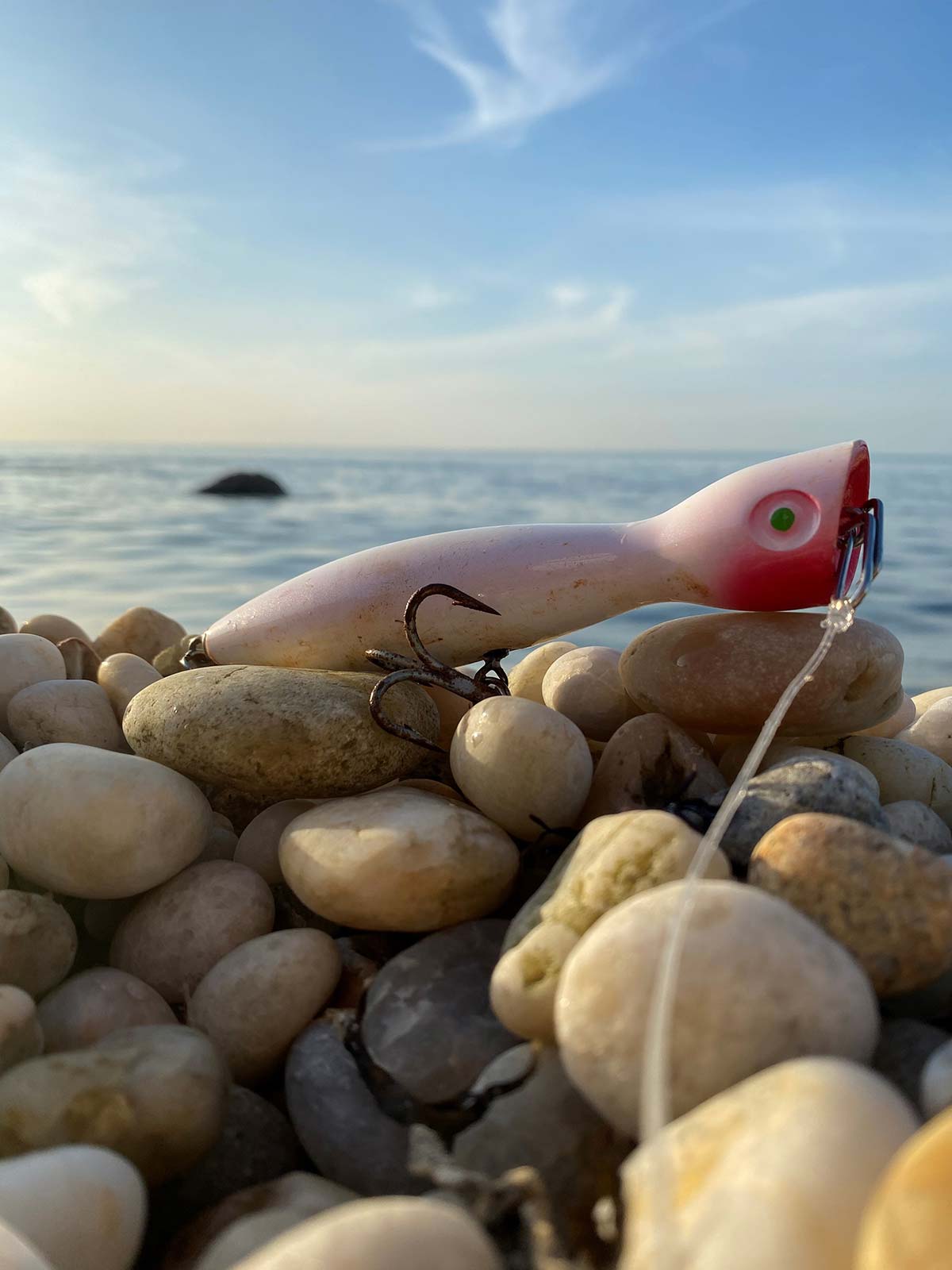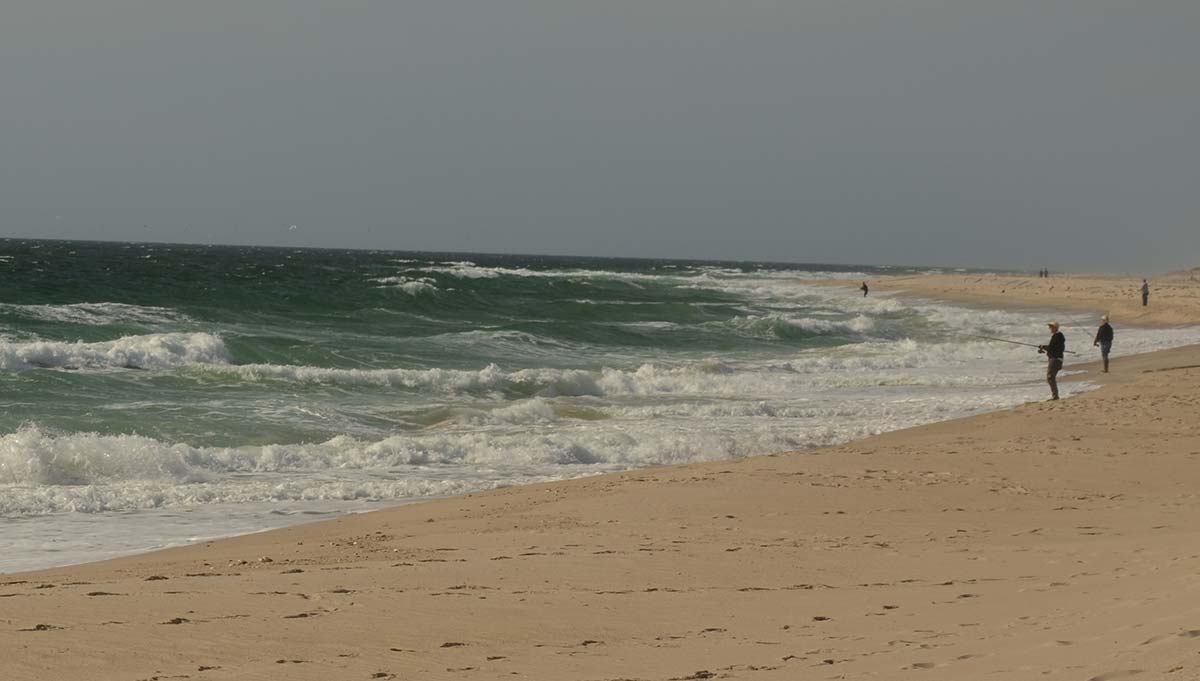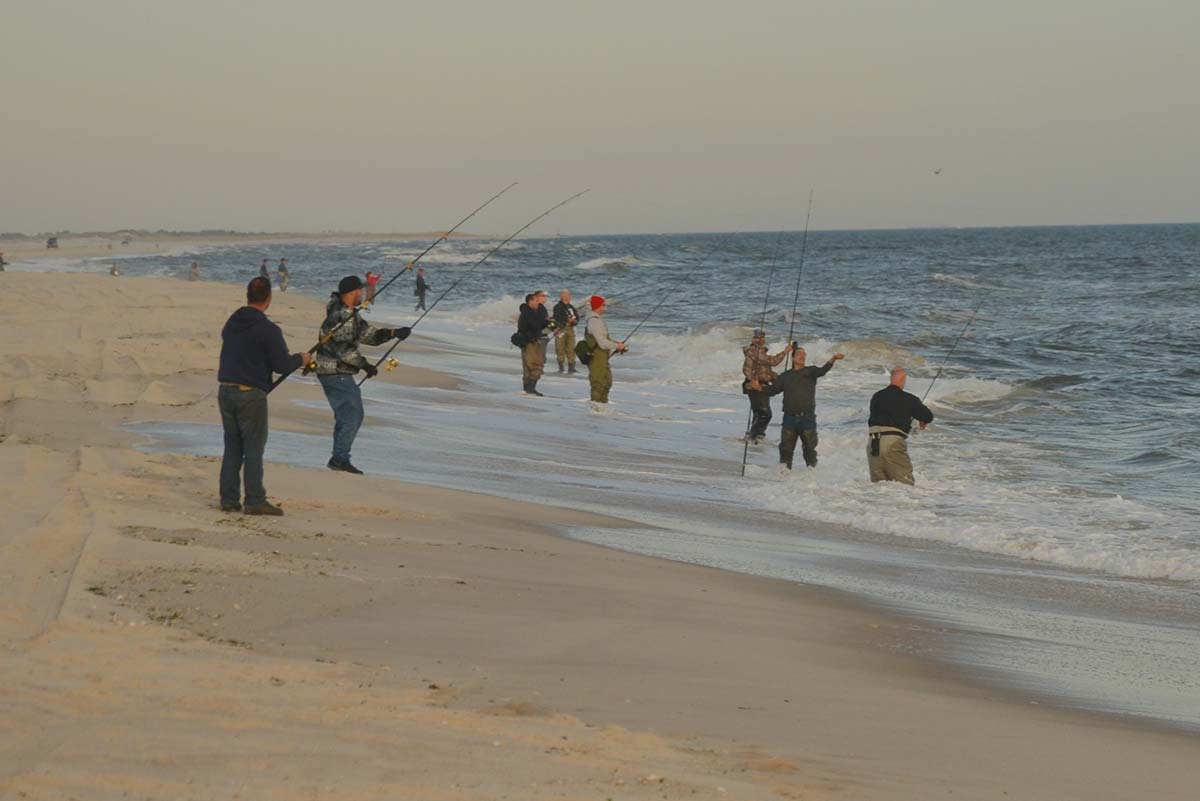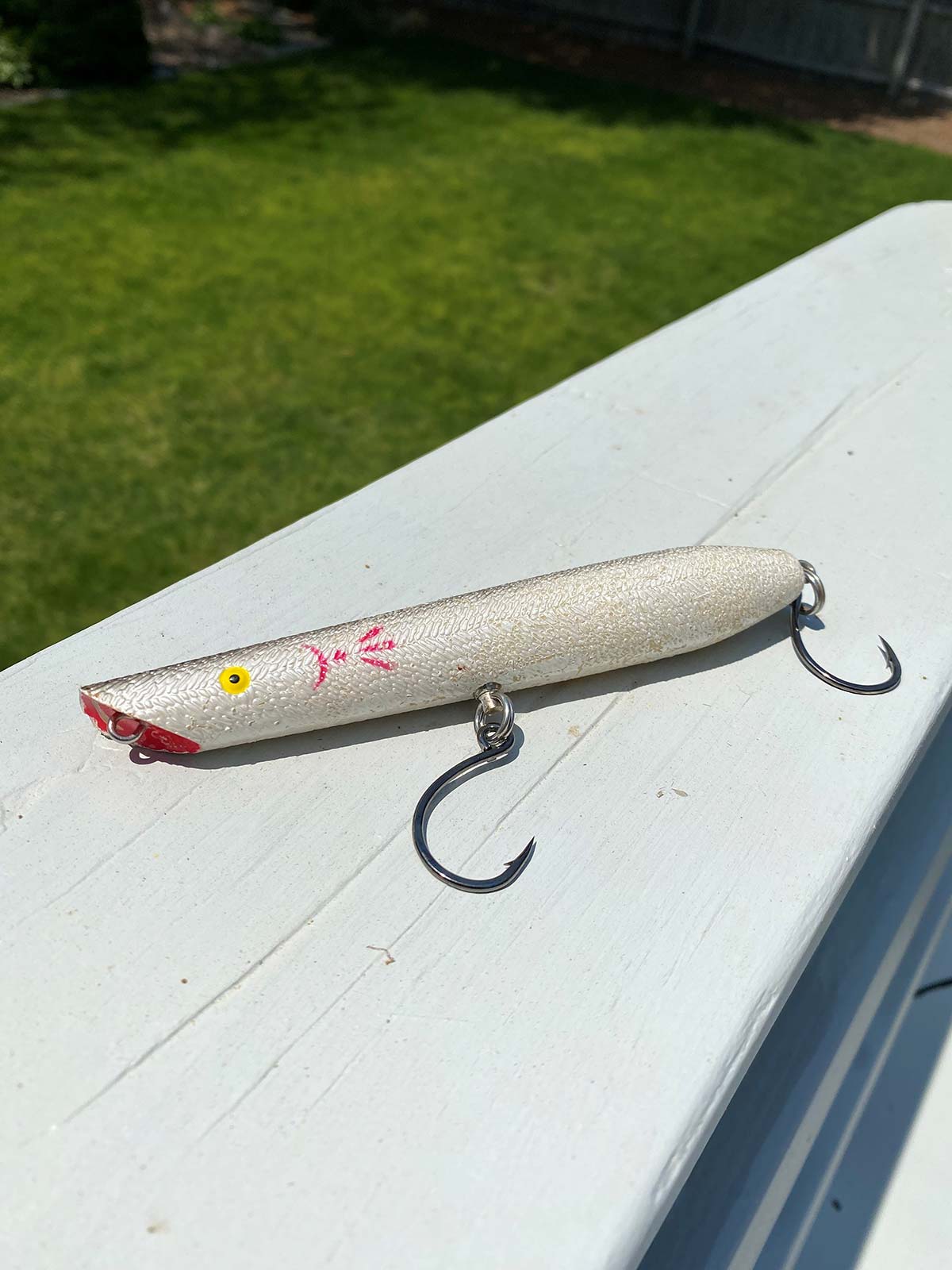
Several different styles of poppers are effective for fall fishing.
It’s late September and the first cold front of the fall is about to hit Long Island. You have been methodically monitoring bait inside the bays to see when and if they decide it’s time to head towards the inlet and the ocean waters for their trek south. Mullet, bunker, spearing, baby weakfish, and even some lingering snapper-size blues are getting antsy. The time is right so you head to the local beach. Before you make your trek, you have not only monitored baitfish, but you have also marked out key areas where there are bars, rips, cuts and points, all solid areas where large bass and blues will set up.
The time has arrived! Its 5 a.m. and false dawn is beginning to light the horizon. You methodically work your Little Neck popper across a rip. As the popper chugs, spitting water on each rod pop, you know “it” is going to happen. Then comes the swirl, then the tail slap, then an explosion of epic proportions as the 30-pound striper annihilates your popper; the fight is on, and fall action has begun.
This is why, out of all the plugs I use, nothing beats a surface popper in the fall in my opinion. The thrill is just too awesome to pass up on.
Little Neck Or Polaris
For Super Strike Little Neck or Gibbs Polaris style poppers, the work is easier, but it’s still something you’ll need to practice. Most anglers I see make a huge mistake when using these — they reel way too fast. I can remember being on the beach with Super Strike fame Don Musso. I was using a blue Little Neck in the fall during a great mullet run. I just could not catch a fish. At least until Don said, “Slow it down.” Then I was “in” on almost every cast.
With reeling fast, it’s easy to keep the plug on the surface chugging along, but does a speedy retrieve really resemble a somewhat wounded or pace setting baitfish leaving the area?
The best method I have found for working these styles is to slow the retrieve down enough to keep the lure on the surface, and keep the lure methodically popping in a rhythmic fashion. Reel, two to three cranks — slowly, then pop; reel, two to three cranks — slowly, then pop, etc. The key is making sure the lure remains active, but also stays in the strike zone for the maximum amount of time.

Pencil Poppers
In my opinion, nothing will produce more surface strikes then a pencil popper. And, nothing will see more lost fish than a pencil popper. The pencil is not hard to master, but does take a little time, and some coordination in the brain department. Remember when you were a kid and you tried to rub your belly and pat your head at the same time? Some of us could do it with ease, while others looked downright awkward to say the least, but eventually mastered it. The pencil is no different; some will pick it up right away, some will take more time. Believe me however, when you do master it, you will never put it down.
The art of using a pencil comes from reeling the plug as slowly as possible (left hand), all while causing the popper to agitate the water by pulsating the rod (right hand). Seasoned surf anglers will make the feat look easy, while it may take a beginner a short period of time to master as well.
For starters, the cast is as important as the retrieve. As your plug is sailing through the air, you must be ready to take up the slack line as quick as possible when the plug touches down, thus beginning your retrieve. This is done by watching your plug, not what is going on around you. As the plug touches down, flip the bail, or put the line on the line roller (for reels without bails) and reel fast until the plug just begins to move. At the same time, you must place the line between your thumb and forefinger, and slide your hand — with line in place — to just below the first guide. After reaching this area, begin pulsating the rod tip by pushing down on the blank repeatedly. This will cause the popper to jerk back in forth in a side-to-side motion. Here comes the tricky part. While you are pulsating your rod tip in a fast-paced manner, you must reel in the line ever so slowly. This will keep the plug in the strike zone, imitating a wounded baitfish.

The Hook Set
Earlier I said pencil poppers will evoke more strikes than any, but it really holds true for all surface poppers. They all will entice prowling bass and blues in the fall. It’s just what they do. I also feel however, you will also “miss” more fish with a popper than any other lure. The reason is simple, and patience before the hook-set will make the difference between hooking up, and watching others catch.
When a fish crashes your plug, do not set the hook immediately, but wait until you feel the weight of the fish. This small pause will allow the fish to turn away with your lure, ensuring a good hook set. In fact, many times, especially with stripers, a fish will come up and tail smack the lure, rather than mouth it. Again, this is another reason to wait for a bit of weight before setting the hook.

Slight Alterations
With the Gibbs or Cotton Cordell Pencil poppers, or any other brand, and Super Strike Little Neck or Gibbs Polaris style plugs, there are only a few modifications I would agree with. The first being to replace the hooks with the newer inline single hooks. These not only will aid in hook sets, but also not damage the mouth of your fish during the fight as trebles often do. They will also make unhooking and releasing a fish a lot easier.
When changing to the inline hooks, bear in mind the size will always be slightly larger than what was originally on the lure. Most poppers in the 2-3/8-ounce size come equipped with 3/0 trebles or one 3/0 in the belly and a single inline on the rear. For inline replacements, you want to go at least two sizes larger. On my Little Neck plugs I use a 5/0 single inline on both the belly and the rear.
The second modification I like is to remove the rear hook on the Little Neck popper and put a larger treble on the belly. This change not only, in my opinion, makes the lure “dance” better, but also aids in limiting bluefish. Blues, unlike bass, take a lure from behind, whereas a bass will hit head first. The lack of the rear hook will help reduce bluefish if that is what you want. If you are going to stick with a single replacement, go up one size than what was on the plug to help in keeping the lure balanced, which will make sure it still casts well.
Regardless of where you fish, surface poppers need to be in your arsenal. They are a load of fun, plus will put a good fish on the end of your line — time after time!



